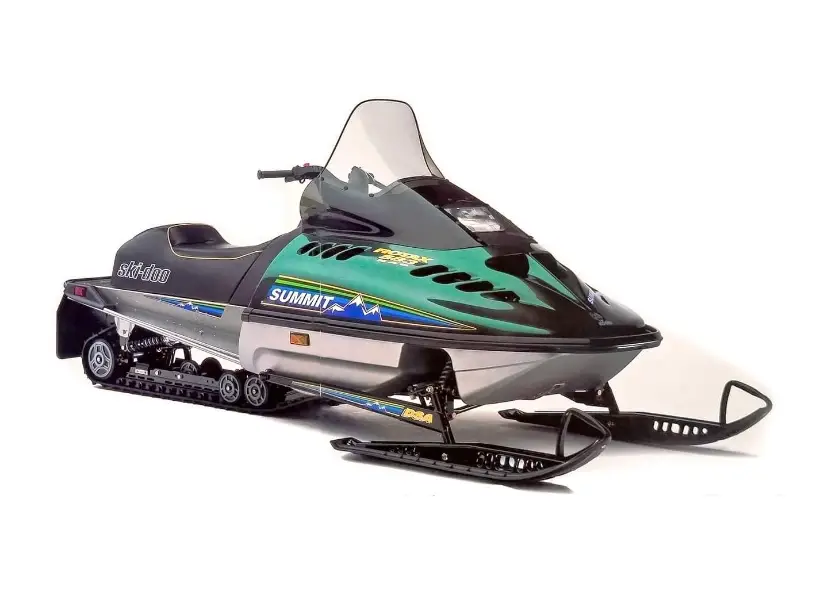Table of contents
ToggleRemarkably, Ski-Doo’s iconic mountain snowmobile, the Summit, has already surpassed 30 years of existence. The Summit made its debut in the 1994 model year, and its evolution has continued unabated ever since. Back then, BRP (then known as Bombardier) created what I consider to be an entirely new category of snowmobiles. To celebrate its legacy, I’ve decided to share its story.
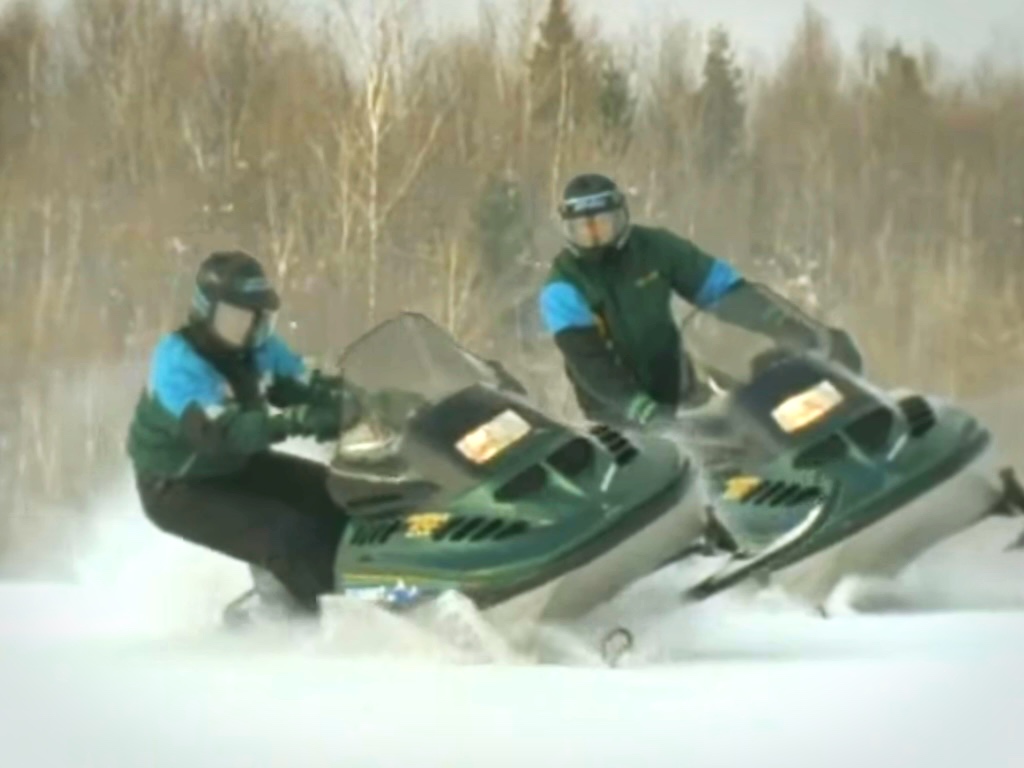
A Highlight at the J. Armand Bombardier Museum
The millionth Ski-Doo snowmobile rolled off the production line more than 50 years ago, a milestone achieved by the 1974 TNT Everest 440. Twenty years later, on September 14, 1993, the two-millionth snowmobile—a 1994 Summit—was manufactured.
This achievement was celebrated with press releases and product photos featuring company executives. It was a momentous milestone unmatched by any other company in the industry. Today, this iconic snowmobile holds a place of honour at the J. Armand Bombardier Museum.
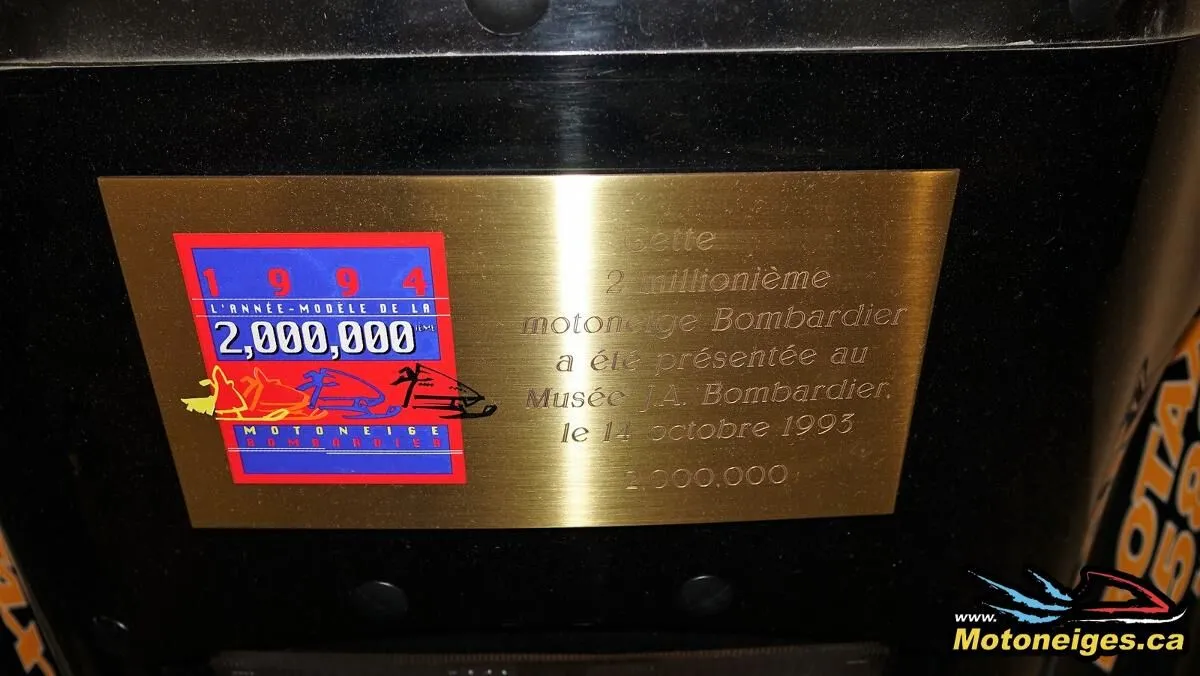
A Look Back
In 1993, the snowmobile industry began to emphasize the power-to-weight ratio of their vehicles. The challenge for engineers was to focus either on maximizing power and performance or on reducing weight. Ski-Doo’s designers chose the latter, aiming to create their first true mountain snowmobile.
By 1993, a shift toward the Western market, higher elevations, and rugged terrain riding was becoming evident. Ski-Doo recognized this trend and began developing a snowmobile specifically for mountain riding.
The Rotax 583 Engine
The first Summit snowmobile was powered by the Rotax 583 RAVE engine, which had debuted on the 1989 Mach 1. Its 108-horsepower output was considered robust for the Summit at the time.
Ski-Doo introduced high-altitude compensation for its carburetors, patenting a unique High Altitude Compensation (HAC) system. This innovation eliminated the need for constant recalibration in mountain environments.
It’s well known that for every 1,000 feet above 3,000 feet of elevation, an engine loses 3% of its power. The HAC system, mounted on the air box, required no external power supply, making it immune to electrical and software issues. It weighed very little and was inexpensive to produce. Using a barometer attached to a diaphragm connected to a dual-cone needle, the HAC automatically adjusted the float bowl pressure in the carburetor as altitude and temperature affected air density.
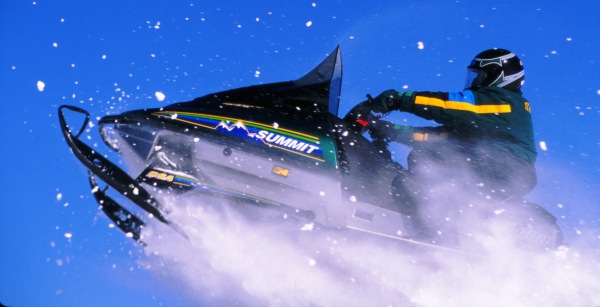
A Lightweight Chassis and Revolutionary Skis
The Summit 583 from 1994 stood out with its vibrant green colour—unique for Ski-Doo at the time—and introduced several firsts for the manufacturer.
Designed specifically for mountain riding, it was the first snowmobile equipped with standard composite skis. These plastic skis, reinforced with metal bridges, reduced the vehicle’s weight, increased flotation, and provided superior performance in sticky snow compared to narrow steel skis.
Built on the new, lighter F2000 chassis, which debuted in 1993 on the Mach Z and MX Z, the Summit utilized an all-aluminum frame for additional weight reduction.
Ski-Doo introduced innovative elements like the DSA ski suspension, which replaced the oversized and underperforming PRS suspension found on the XTC models. The 1994 Summit featured a 36-inch ski stance, 4 in. narrower than other F-chassis models, improving deep-snow handling. At the rear, Ski-Doo installed the C-7 adjustable coil spring suspension with five-position high-pressure gas shocks.
Tracks That Can’t Compare to Today
The 1994 Summit was equipped with a 15 × 136 in. Camoplast track featuring 0.912 in. lugs. By comparison, modern Ski-Doo mountain snowmobiles feature tracks up to 174 in. long with 3 in. lugs. It’s astonishing to think that the 1994 Summit managed with such tracks, but it marked the early days of mountain snowmobiles.
Minimalist and Lightweight
The 1994 Summit had a straightforward design. It lacked reverse gear and an electric starter, requiring significant physical effort to start using the pull cord after priming. A small storage compartment at the seat’s end added minimal utility.
This minimalist approach enabled the Summit to weigh just 483 pounds.
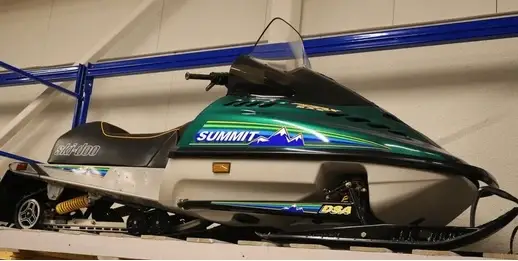
A High Windshield
Interestingly, the 1994 Ski-Doo Summit featured a high windshield to protect the rider from powder snow—a stark contrast to modern mountain snowmobiles, which often lack windshields altogether.
Paving the Way
In hindsight, the 1994 Ski-Doo Summit was far from perfect. However, it revolutionized the industry’s perception of the mountain segment, prompting manufacturers to focus their efforts in this area. It played a pivotal role in developing a market segment now beloved by thrill-seeking enthusiasts.
Watch Patrick’s Video (French Only)

—— — — —
Poursuivez votre lecture
Ski-Doo Broadens Their In-Season Mountain Lineup
Avalanche Safety Training: Prepare for Safe Mountain Outings

